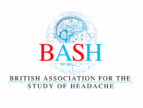Welcome to our GP area – discover who we are, our services, training opportunities, and valuable resources.

Who we are
We are a group of over 80 GPs from around the UK and Eire, who have a special interest in managing migraine and other headache disorders.
Members range from those who work solely in General Practice and who want to increase their understanding and skills in managing headache disorders, to those in Community-based headache services, and others working within Secondary care neurology, Tertiary headache clinics and in the third sector.

What we do
As a BASH GP member, you are welcome to join our GPwSI Google email support group. We discuss clinical, prescribing, service development, interesting papers or protocol issues by email. Members can use our ‘hive mind’ and peer support in a friendly and supportive environment. Email info@bash.org.uk if you would like to be added once you have joined.
We organise on-line webinars with expert speakers as part of our ongoing professional development programme. These are recorded usually and shared later with members who can’t attend at the time. We also run face to face study days for GPs.
Networking face-to-face at BASH UK and other UK and international conferences is encouraged and stimulating.
There are also opportunities to get more involved with BASH by becoming an Honorary advisor on BASH Council. These voluntary posts are opened on an annual basis.

Training
Individual GP members will often receive training from their linked organisation e.g. NHS clinics , National Migraine Centre. BASH and the IHS run regular training webinars as do some pharma companies. Access to Cephalalgia journal is available.
There is no currently standardised GPwSI training programme qualification but this is something BASH hopes to develop.
Resources for GPs
Interested in learning more about managing migraine and headache? The following are useful resources.
Support service is always there for you!
Useful Websites
BASH website: Join BASH here
ICHD-3 The International Classification of Headache Disorders
International Headache Society Access to Cephalalgia Journal and IHS webinars.
National Migraine Centre Charity providing people with migraine with appointments with headache specialist doctors on a voluntary donation, self-referral basis. Also factsheets.
Organisation for the Understanding of Cluster Headache OUCH UK
The Migraine Trust Charity providing helpline and information to people with migraine.

